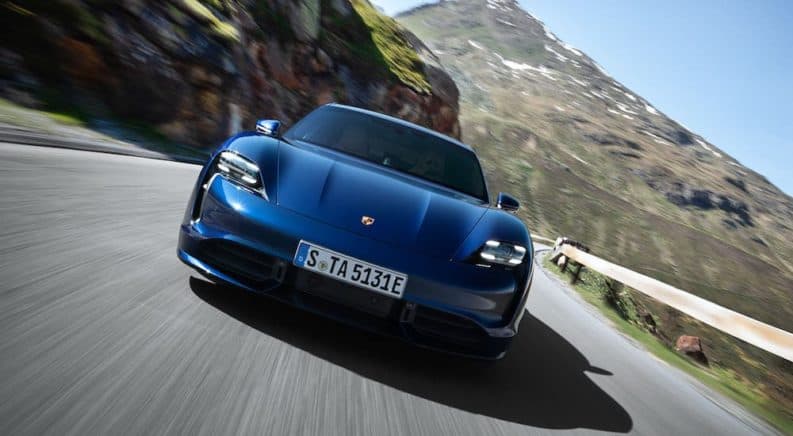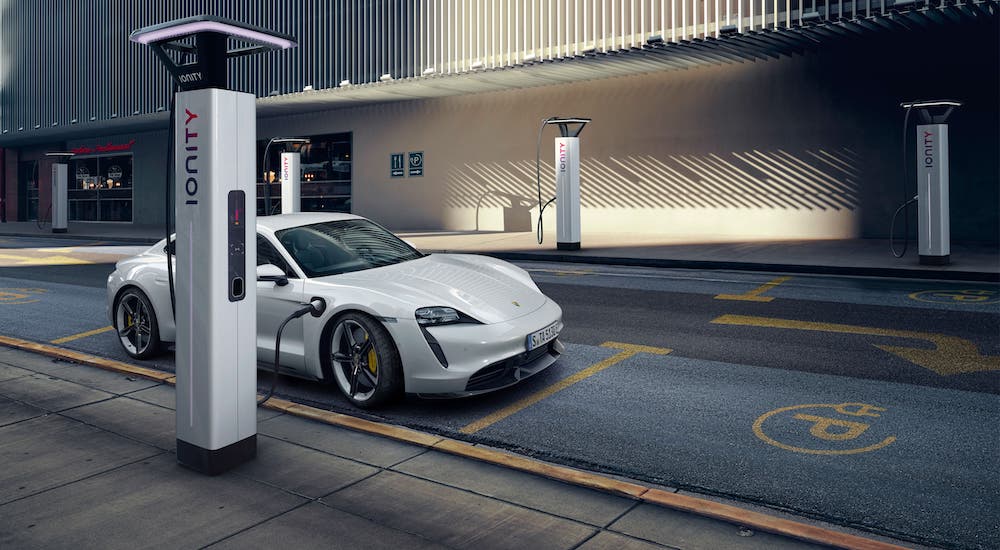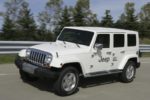Porsche has a long history of producing innovative vehicles. From the original four-cam Carrera engines to the first Tiptronic and dual-clutch transmissions, Porsche has always been ahead of the curve when it comes to technology. Now, this famous company has pushed the boundaries once again with its first electric car, the Porsche Taycan. This revolutionary vehicle is not only a phenomenal performer that has proven that electric vehicles can compete with gasoline cars on the track, it also marks the first time a traditional automobile manufacturer has successfully built a world-class electric vehicle.
Despite its blistering performance, the Porsche Taycan is actually not a pure sports car, but rather a more practical four-door sedan. This puts it squarely in competition with the established Tesla Model S and has resulted in a controversial rivalry between the two vehicles that has ranged from Nurburgring times to range figures. While both cars have their own supporters and detractors and it is not yet clear which of the two will ultimately prevail, one thing is clear – the Porsche Taycan has started a new era in which electric vehicles can ignite as much passion in the hearts of automobile enthusiasts as gasoline cars can.
Battle of the Electric Titans
The rivalry between the Porsche Taycan and the Tesla Model S began as soon as the Porsche Taycan was announced. After it had spent eight years on the market without competition, everyone was ready to see the Tesla Model S face a real challenger. However, Porsche did not turn away from the task and threw down the gauntlet by taking its new electric vehicle to the famous Nurburgring. With a 7:42 lap time, the Porsche Taycan proved that it could compete evenly with gasoline-powered cars in its class and marked the first time that a production electric car had even attempted to market itself on its track abilities. For this event alone, the Porsche Taycan deserves its status as a truly historic step in the development of electric vehicles.
Not to be left behind, Tesla quickly responded to Porsche and, after several attempts, produced an unofficial 7:23 lap time. However, while this time was considerably quicker than that of the Porsche Taycan, the numbers alone do not tell the full story. This is because the car Tesla used to achieve this record was a heavily modified Tesla Model S that had not only been stripped down for track use but which had an entirely new drivetrain with three electric motors rather than the two found on production models. Given these large changes that had to be made to the Tesla Model S to allow it to compete with a production Porsche Taycan, it is difficult to say the Porsche actually lost this track battle despite having a nominally slower lap time. However, a production version of the three-motor Tesla Model S is rumored to be released later this year, which would certainly put things back into Tesla’s favor.
Nurburgring lap times are not the only performance aspects to consider when comparing the two cars. The superior handling and performance-oriented design of the Porsche Taycan has been noted in several independent comparisons of the two cars, as would be expected of any product produced by Porsche. Reviewers of the two cars have also demonstrated that the Porsche Taycan does an excellent job of maintaining its performance under sustained hard-driving, while the performance of the Tesla Model S quickly degrades to a fairly mediocre level after just a handful of launches and quarter-mile runs. While this is not anything to be particularly surprised given that, unlike the Porsche, the Tesla was never intended as a true performance car and very few drivers will ever notice this difference, it is another place where Porsche demonstrated that it could design an electric vehicle better than the current state of the art.
Questions of Range
The performance battle was just the first stage of the competition between the two flagship electric vehicles. A key metric unique to electric vehicles is range. Unlike with a gasoline car, where stopping at a gas station to top off only takes a few minutes, recharging an electric vehicle is a lengthy process that is really only practical to do overnight or when the car is already parked for another reason. This means that long-range is vital to a viable electric vehicle and has been a key component of Tesla’s success. However, estimating the range of an electric vehicle is not a simple matter, and different test agencies have produced very different range figures for the same car. The two main tests for estimating range are the American EPA cycle and the European WLTP cycle.
The WLTP cycle is generally more slightly generous than the EPA cycle. For example, the EPA cycle rates the Tesla Model 3 Performance at 348 miles while the WLTP gives it 368 miles. However, when it came to range figures for the Porsche Taycan, the two cycles gave wildly different results. While the Porsche Taycan Turbo received a 280-mile range estimate on the WLTP cycle, the EPA cycle rated it at just 201 miles. And if the vehicle really had little more than half the range of its competitor, then the superior performance figures of the Porsche Taycan would be rather academic.
Facing a marketing disaster for its new car, Porsche commissioned independent range testing from AMCI. This round of testing estimated that the true range of the Porsche Taycan Turbo is 275 miles in a combination of city and highway driving, which is quite close to the results from the WLTP cycle. Multiple third-party tests from reputable organizations have also since confirmed that the real-world range of the Porsche Taycan is far closer to that of the Tesla Model S than the EPA numbers would suggest. In the end, while the Porsche does still fall behind the Tesla in range, the difference is not so great that the Porsche Taycan is out of the competition.
The Winner?
However, the intense battle between the Porsche Taycan and the Tesla Model S is unlikely to be won by either car. Although they are currently the only high-end production electric vehicles, the truth is that the two cars really do not share the same segment. Porsche chose to emphasize performance when designing its car and has created a currently unmatched electric sports sedan. It produces better numbers then Tesla across the board while being much better suited to performance driving.
In contrast, the Tesla Model S is primarily a high-tech luxury vehicle, and its main selling point is its unrivaled level of advanced software, including its peerless self-driving system. As more manufacturers begin producing competitive electric vehicles, it is likely that this battle between Porsche and Tesla will be consigned to the history books as the both Porsche Taycan and Tesla Model S begin to face new rivals that seek to compete with them more directly.
For now, this competition marks the vital first step into the competitive development of electric vehicles. While Tesla has been instrumental in showing the world that an electric vehicle can be something more than a short-range economy car, the Porsche Taycan has demonstrated that interesting electric vehicles are not unique to Tesla and that the market wants more manufacturers to step up to the plate. While Porsche may not have been the very first this time around, once again, the company has blazed a trail that the rest of the automotive world will follow.






